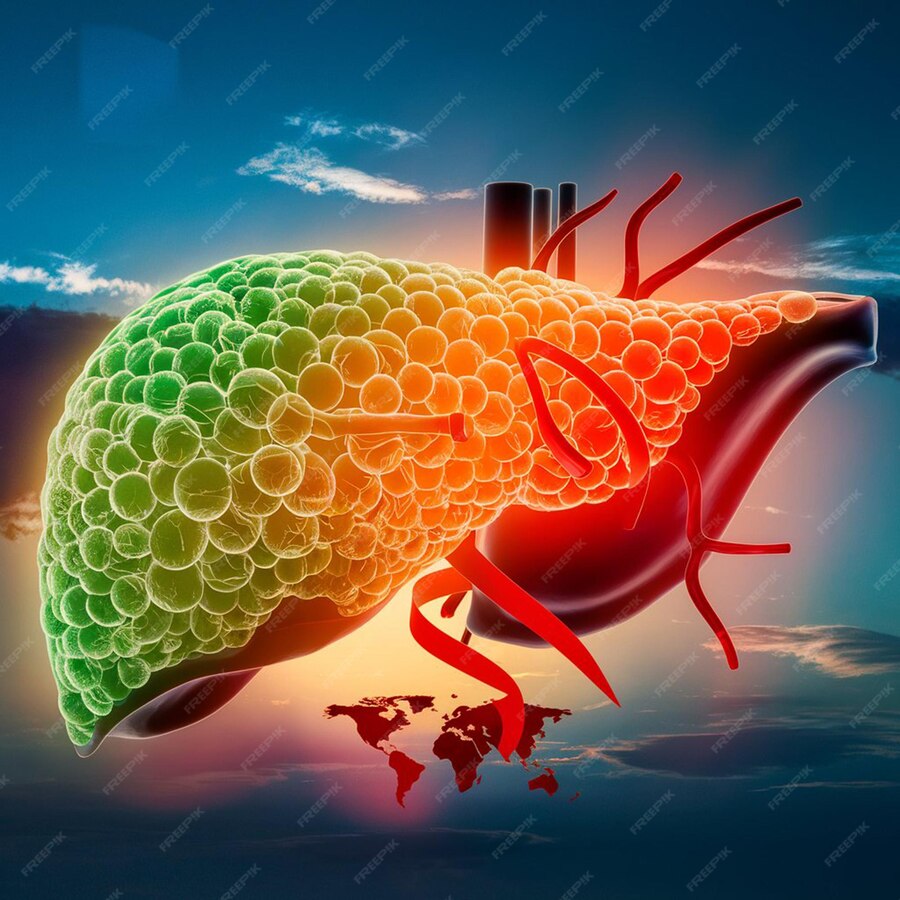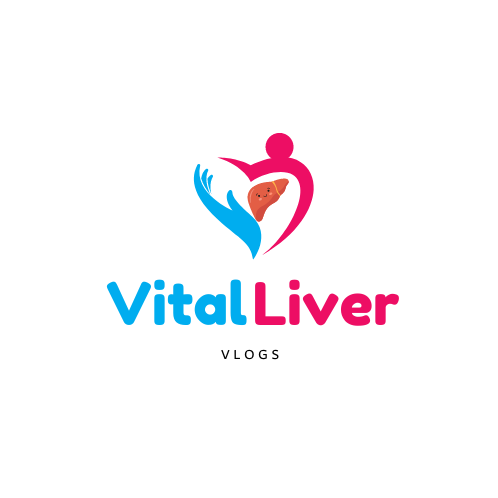Epidemiology of Liver Diseases: A Comprehensive Overview
Liver diseases pose a significant global health challenge, affecting millions of people worldwide. Understanding the epidemiology of liver diseases is crucial for developing effective prevention, diagnosis, and treatment strategies. This article provides an in-depth look at the epidemiology of liver diseases, exploring their prevalence, risk factors, and impact on public health.

Introduction
The liver is a vital organ responsible for numerous essential functions, including detoxification, metabolism, and the production of vital proteins. Liver diseases can severely impair these functions, leading to significant morbidity and mortality. This blog delves into the epidemiology of liver diseases, highlighting their global burden, risk factors, and public health implications.
What is Epidemiology?
Epidemiology is the study of how diseases affect the health and illness of populations. It involves the analysis of patterns, causes, and effects of health and disease conditions in defined populations. Understanding the epidemiology of liver diseases helps identify risk factors, inform public health policies, and guide research and treatment efforts.
Global Burden of Liver Diseases
Liver diseases are a major cause of illness and death worldwide. They include a range of conditions such as viral hepatitis, alcoholic liver disease, non-alcoholic fatty liver disease (NAFLD), cirrhosis, and liver cancer.
Prevalence
- Viral Hepatitis: Hepatitis B and C affect approximately 325 million people globally. Chronic hepatitis B affects around 257 million people, while chronic hepatitis C affects about 71 million people.
- Alcoholic Liver Disease: Responsible for about 3.3 million deaths annually, primarily due to heavy alcohol consumption.
- Non-Alcoholic Fatty Liver Disease (NAFLD): Affects about 25% of the global population, with rising prevalence due to increasing rates of obesity and metabolic syndrome.
- Liver Cirrhosis: Causes over 1 million deaths annually worldwide.
- Liver Cancer: The sixth most common cancer globally and the third leading cause of cancer-related deaths.
Geographical Variation
The prevalence and types of liver diseases vary significantly by region due to differences in risk factors, healthcare access, and socio-economic conditions.
- Asia and Africa: High prevalence of hepatitis B and liver cancer.
- Western Countries: Higher rates of NAFLD and alcoholic liver disease.
- Developing Countries: Limited access to healthcare contributes to late diagnosis and poor outcomes.
Risk Factors for Liver Diseases
Understanding the risk factors for liver diseases is essential for prevention and management. Key risk factors include:
1. Viral Infections
Hepatitis B and C are major risk factors for chronic liver disease, cirrhosis, and liver cancer. These infections are transmitted through contact with infected blood and body fluids.
2. Alcohol Consumption
Excessive alcohol intake is a leading cause of liver disease, particularly alcoholic liver disease and cirrhosis.
3. Obesity and Metabolic Syndrome
Obesity, diabetes, and metabolic syndrome significantly increase the risk of developing NAFLD and its more severe form, non-alcoholic steatohepatitis (NASH).
4. Genetic Factors
Inherited conditions like hemochromatosis and Wilson’s disease can lead to liver damage. Family history also plays a role in the susceptibility to certain liver diseases.
5. Environmental Exposures
Exposure to toxins, certain medications, and industrial chemicals can cause liver damage. Aflatoxins, found in contaminated food, are a significant risk factor for liver cancer in some regions.

Impact of Liver Diseases on Public Health
Liver diseases have a profound impact on public health, contributing to high healthcare costs, loss of productivity, and reduced quality of life.
1. Healthcare Costs
Managing liver diseases requires significant healthcare resources, including hospitalizations, medications, and liver transplants. The economic burden is substantial, particularly in countries with high prevalence rates.
2. Mortality and Morbidity
Liver diseases are a leading cause of death worldwide. Chronic liver diseases can lead to severe complications like liver failure, hepatic encephalopathy, and liver cancer, resulting in significant morbidity and mortality.
3. Social and Economic Impact
Chronic liver diseases can lead to disability and loss of productivity, affecting individuals’ ability to work and contribute to society. This has broader socio-economic implications, particularly in low- and middle-income countries.
Prevention and Control of Liver Diseases
Effective prevention and control strategies are essential to reduce the burden of liver diseases. These include:
1. Vaccination
Vaccination against hepatitis B and A is a key preventive measure. Universal vaccination programs have significantly reduced the incidence of hepatitis B in many countries.
2. Screening and Early Detection
Screening for hepatitis B and C, particularly in high-risk populations, allows for early detection and treatment, reducing the risk of chronic liver disease and liver cancer.
3. Lifestyle Modifications
Promoting healthy lifestyles, including reducing alcohol consumption, maintaining a healthy weight, and exercising regularly, can prevent NAFLD and other lifestyle-related liver diseases.
4. Public Health Education
Raising awareness about the risk factors and prevention of liver diseases through public health campaigns can help reduce the incidence and improve outcomes.
5. Access to Healthcare
Improving access to healthcare, particularly in low-income regions, is crucial for early diagnosis and effective management of liver diseases.
Research and Future Directions
Ongoing research is essential to better understand the epidemiology of liver diseases and develop new treatments. Key areas of research include:
1. Novel Therapies
Developing new antiviral drugs, antifibrotic agents, and treatments for NAFLD and NASH is a major focus.
2. Biomarkers for Early Detection
Identifying biomarkers for early detection of liver disease can improve prognosis and treatment outcomes.
3. Epidemiological Studies
Conducting large-scale epidemiological studies to understand the changing patterns of liver disease and their risk factors.
4. Health Policy and Implementation Research
Researching effective health policies and implementation strategies to improve prevention, screening, and treatment of liver diseases.
Conclusion
The epidemiology of liver diseases highlights the significant global burden and the urgent need for effective prevention and control strategies. By understanding the prevalence, risk factors, and impact of liver diseases, we can develop targeted interventions to reduce their incidence and improve outcomes. Continued research and public health efforts are essential to address this growing health challenge.
FAQs
1. What are the most common liver diseases globally?
The most common liver diseases globally include viral hepatitis (hepatitis B and C), non-alcoholic fatty liver disease (NAFLD), alcoholic liver disease, cirrhosis, and liver cancer.
2. How can liver diseases be prevented?
Liver diseases can be prevented through vaccination (for hepatitis A and B), maintaining a healthy lifestyle (including limiting alcohol intake and managing weight), early detection through screening, and avoiding exposure to toxins and contaminated food.
3. Why is hepatitis B more prevalent in Asia and Africa?
Hepatitis B is more prevalent in Asia and Africa due to higher rates of mother-to-child transmission, limited access to vaccination and healthcare, and higher prevalence of risk factors like unsafe medical practices and blood transfusions.
4. What role does obesity play in liver disease?
Obesity is a major risk factor for non-alcoholic fatty liver disease (NAFLD) and its more severe form, non-alcoholic steatohepatitis (NASH), which can progress to cirrhosis and liver cancer.
5. What are the public health implications of liver diseases?
Liver diseases have significant public health implications, including high healthcare costs, loss of productivity, and increased mortality and morbidity. Effective prevention, early detection, and management strategies are essential to mitigate these impacts.

[…] Fatty Liver Disease […]